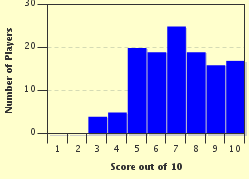Quiz Answer Key and Fun Facts
1. First, my team of paleoanthropologists will carefully measure the dimensions of the skull. Which of the following instruments will help us measure the skull with the most accuracy?
2. Overall, which word describes best how hominid skulls look when compared to humans?
3. Next, my team of paleoanthropologists will measure the depth of the roof of the mouth in order to determine the size of the teeth that were in the skull. What is the roof of the mouth called?
4. While my team is examining the teeth we found, we will also note the shape of the mandible. If the skull dates back to be very old, how will the jawbone be shaped?
5. My team of paleoanthropologists will also look at the brow ridge on the skull to see if it is very pronounced. What was the purpose of the brow ridge?
6. As my team examines the skull, we closely study the large opening in the occipital bone. What is the opening called?
7. My team of paleoanthropologists will also closely study the inside of the front of the skull for an imprint left by the Broca's area. What information will we glean from studying this part of the skull?
8. Another important area of the skull for my team to study is the cranial cavity to see if the brain size can be determined. In the past paleoanthropologists have determined brain size by calculating the volume of granules that can be contained in the cavity.
9. Based on what you have learned, evaluate these findings: the skull is round, and has a noticeable chin. Smaller teeth are in a "C" shaped jawbone. There is a centrally located opening in the occipital bone. The Broca's area left a noticeable imprint on the inside of the cranium. The brain has a volume of approximately 1,500-1,800 cm3. Which of the choices below would offer the best classification?
10. Based on what you have learned, how would you classify a skull that is more elongated, has a distinct brow ridge, large teeth and a mandible more in the shape of a "U", a centrally located foramen magnum, a cranial capacity of about 375 to 500 cm3, and a less distinct Broca's area? Would it be a hominid or human?
Source: Author
ponycargirl
This quiz was reviewed by FunTrivia editor
bloomsby before going online.
Any errors found in FunTrivia content are routinely corrected through our feedback system.

